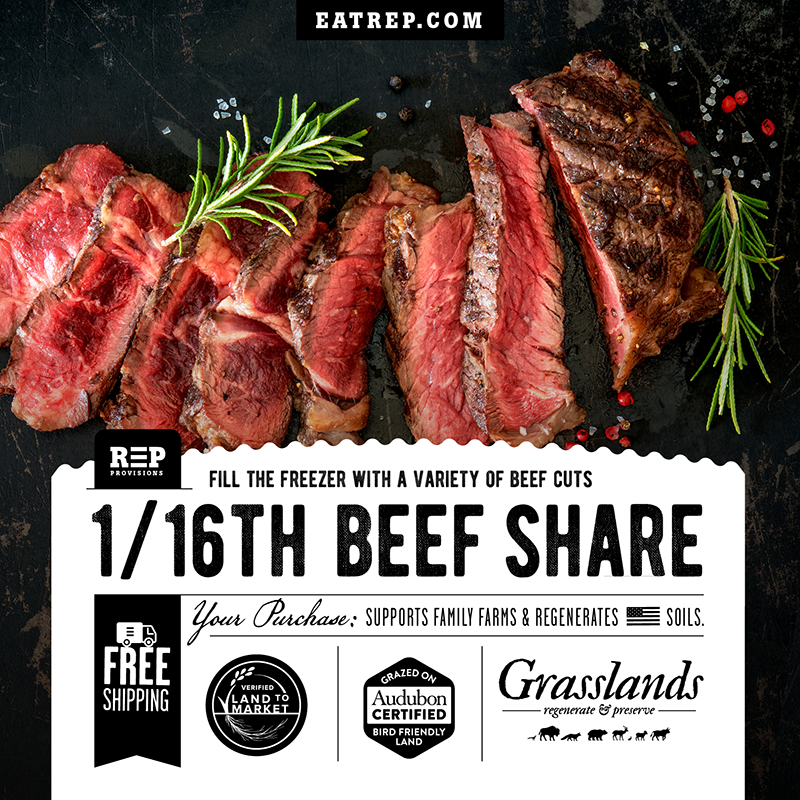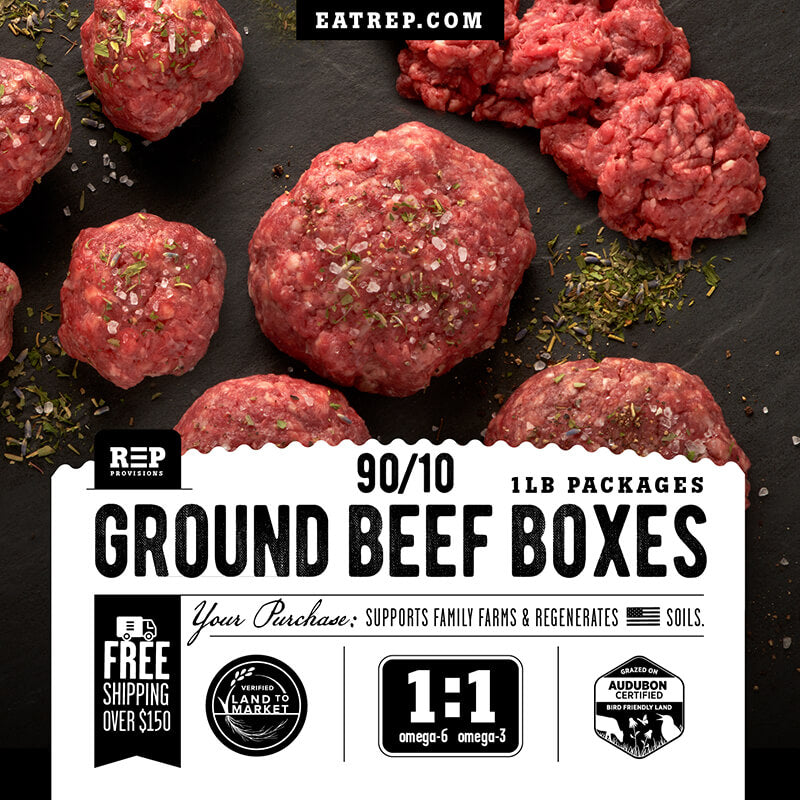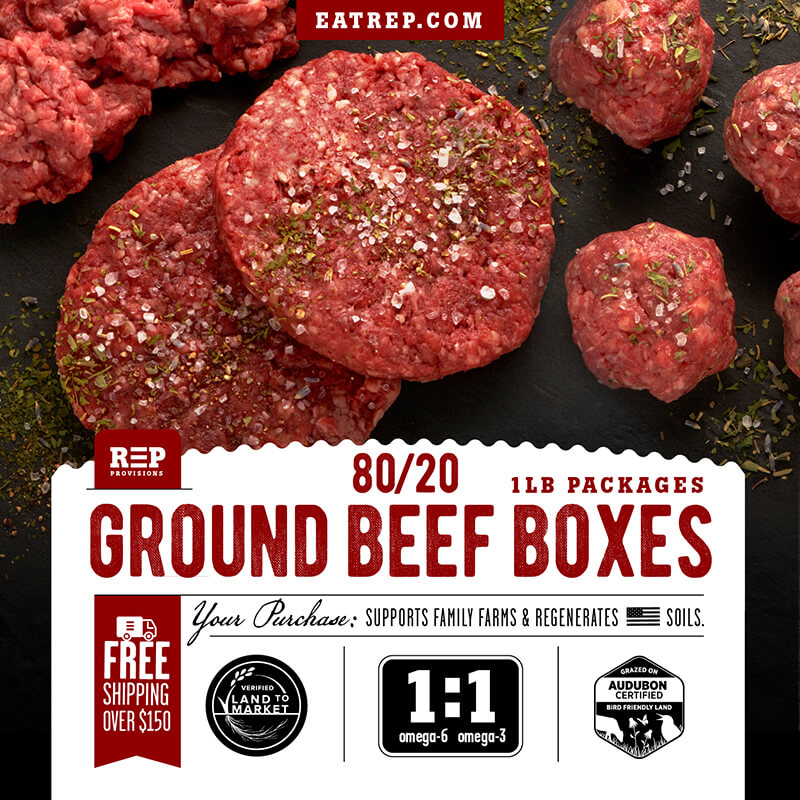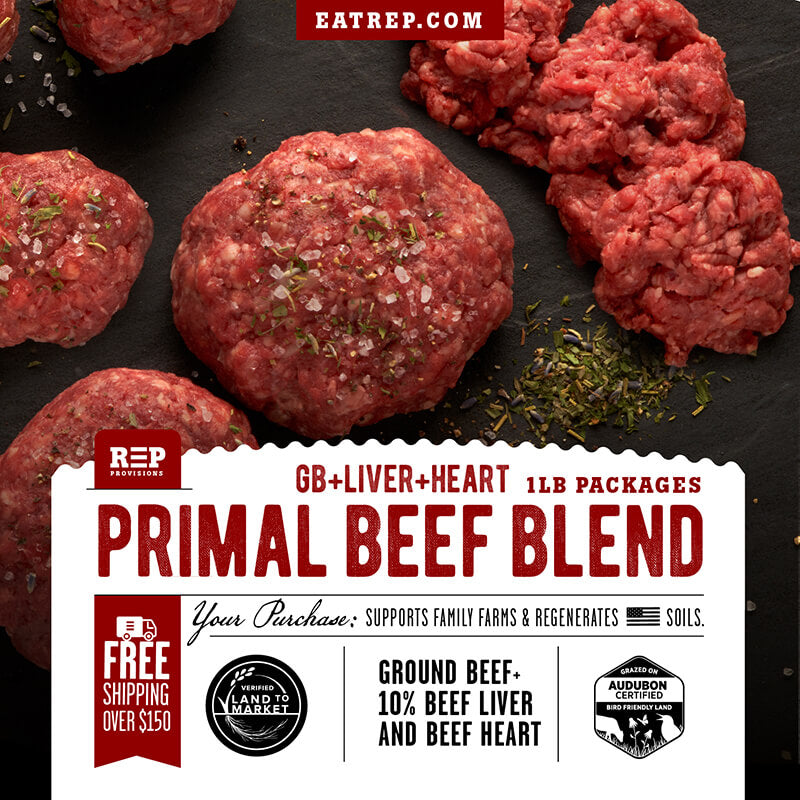
Although regenerative agriculture is far more nuanced than a list of bullet points could ever express, we all need to start somewhere. It can be helpful to think of the 5 principles of regenerative agriculture as building blocks, which can be arranged according to the unique needs, context, and goals of a specific farm or ranch.
Why Does Regenerating Soil Health Matter?
Soil is where the health of our entire system begins. Regenerative agriculture feeds soil microbes, soil feeds plants, plants feed livestock, and this exchange continues up the food chain all the way to us humans.
It’s no coincidence that as our soils have been depleted, so have the amounts of vitamins, nutrients, and minerals in your food. In fact, the food that you’re eating today is far less nutritious than it was 50 years ago. While you may be consuming more calories, your body is starving for proper nutrition.
Beyond the health of your body, restoring our soils offers a proven solution to some of the greatest systemic issues facing humanity today. Healthy soils sequester carbon, impact the quality of our air and water, mitigate the effects of flooding and drought, as well as contribute to a more resilient food system in the face of climate change.
5 Principles of Regenerative Farming
Principle 1: Soil Armor.
If you observe nature, you’ll rarely find bare soil. While conventional feedlot beef destroys the environment and creates large swaths of exposed dirt, regenerative ranches mimic natural prairie ecosystems by keeping the land covered with a diversity of native living plants as well as dead plant materials. Armoring the soil protects it from the elements, suppresses weed growth and invasive species takeover, and provides habitat for beneficial species, both above and below ground.
Just like us, soil needs protection from the sun, water, and wind.
• Sunshine. When soil dries out, it dies. Covering soil helps to maintain more moderate temperatures which supports soil biology throughout the seasons.
• Water. Covering soil also retains moisture and reduces evaporation rates. This successfully mitigates erosion caused by the impact of rain and flooding.
• Wind. Remember the Dust Bowl? Keep the soil in the ground where it belongs.

Principle 2: Minimize Soil Disturbance
Physical disturbances like overuse, overgrazing, and tilling destroy soil biology as well as soil structure. When we physically disturb the land, carbon stored deep in the soil releases into the atmosphere contributing to harmful greenhouse gasses. Chemical inputs like synthetic fertilizers, pesticides, antibiotics, and fungicides also effectively destroy billions of microbes in living soil. Conventional factory farming routinely destroys the land whereas regenerative ranching limits disturbances allowing soil to evolve, build, and grow in complexity overtime.

Principle 3: Promote Biodiversity.
Diversity of microbes, insects, plants, animals, and people increases the overall health and resiliency of our agricultural system.
Conventional factory farms destroy all other forms of life to cultivate only one species of animal. This is called a monoculture. Animals raised like this are routinely given antibiotics, which through their manure and urine contaminates groundwater and changes the microbial make up of soil.
On regeneratively managed ranches you can expect to see a wide variety of living creatures. Beyond a variety of livestock and farm animals, you’ll see monarch butterflies, various species of native grassland birds and insects, small mammals, and many different types of plants. The reason regenerative agriculture promotes biodiversity is because each living part within the system plays a unique role, and if you remove one species, things become imbalanced. Instead of cultivating one species at the expense of the rest, regenerative agriculture mimics the natural world. And, monocultures do not exist in the natural world.

Principle 4: Keep Living Plants/Roots in the Soil.
The main idea here is to keep as many living plants in the soil for as long as possible. Ranchers who do this increase soil fertility so that their fields and pastures can continue to support life for many future generations to come. Our prairies boast 60-70 different types of native grass species, providing habitat, soil stability, and forage for grazing animals. A plant that’s living is a plant that’s capturing carbon, feeding the soil, and feeding living creatures.

Principle 5: Integrate Animals.
Animals contribute natural fertilizer as well as stimulate plant growth and productivity. They play a critical role in nutrient cycling and the carbon cycle. When we create agricultural systems without them, we increase our reliance on synthetic inputs which end up polluting our rivers, streams, and oceans. Grazing animals holistically actually revitalizes and improves degraded ecosystems, while helping to sequester carbon deep within the soil

How Does REP Provisions Regenerate Soil Health?
We are proud to share that all of our ranchers implement unique land management plans guided by the 5 principles of regenerative agriculture. We know we’re leaving the land better than we found it, because we’ve tested it in partnership with the Savory Institute. All of our products are marked with the Land to Market seal, meaning that our ranches are verified regenerative, verified better for the planet.





